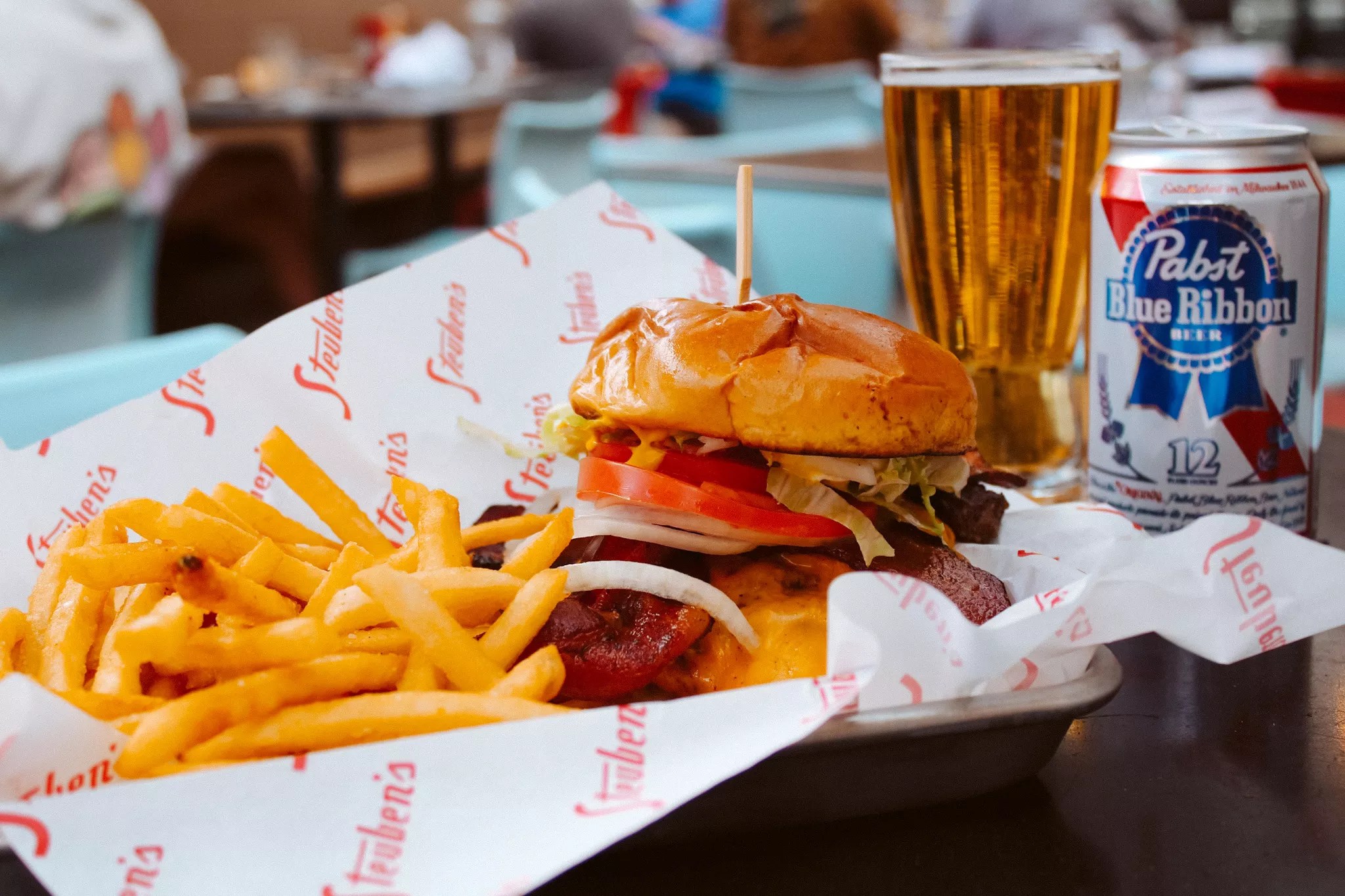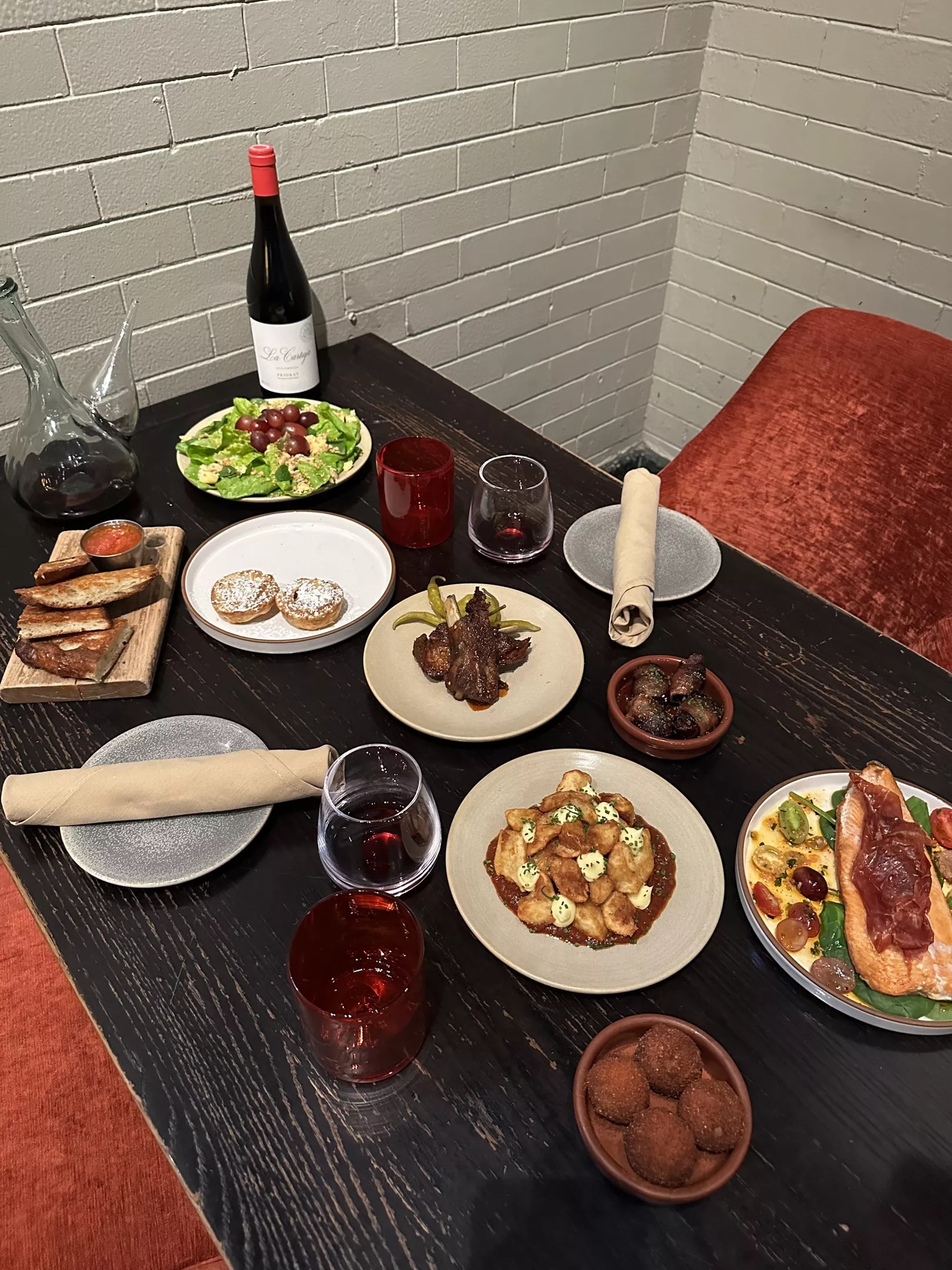
Steuben’s

Audio By Carbonatix
As Denver’s food scene continues to grow and gain national exposure, higher food costs and spikes in rent and minimum wage have pushed menu prices beyond what many diners can afford. While there are cheap eats to be found, it’s not uncommon to see a simple burger and fries hovering well above $20 -before tip – or to shell out more than $15 for a cocktail.
A certain type of restaurant is in an especially precarious position: the sit-down establishment that focuses on serving premium plates with higher-quality ingredients than fast food or fast-casual spots, but without the prestige of high-end eateries. Many of these restaurants are the neighborhood spots that depend on a steady flow of regular, casual diners who would balk at a $30 burger, even if the ingredients and labor costs demand such a price.
In response, some spots have taken creative measures to make dining out more affordable.
Level 1: Adding/Expanding Happy Hour
Denver, make your New Year’s Resolution Count!
We’re $17,500 away from our End-of-Year campaign goal, with just a five days left! We’re ready to deliver — but we need the resources to do it right. If Westword matters to you, please contribute today to help us expand our current events coverage when it’s needed most.
The most obvious tactic to attract diners with deals is leaning on happy hour. FlyteCo Tower in Central Park recently launched its Basic Economy happy hour. Available after 7 p.m. every day, it includes $5 Jameson, $2.50 Hamms, a 10-inch cheese pizza for $7 or pepperoni for $8, and one pound of wings for $8. “It’s beneficial, as we’re bringing in more people during off-peak hours as well as providing our regulars even more options with how they choose to spend their hard-earned money,” explains co-owner Morgan O’Sullivan.
The Block Distilling Co. in RiNo added a Classic Cocktails happy hour late last year to directly appeal to price-sensitive consumers. It includes five options for $8 each, available from 3 to 6 p.m. Monday through Thursday and noon to 6 p.m. Friday. “We choose to feature classic cocktails for our happy hour because they are sometimes overlooked in favor of our popular seasonal cocktails,” says co-founder Kraig Weaver, who adds that the reception has been so positive, Block Distilling plans to keep the happy hour in place permanently.
Some places with established happy hours have opted to make them longer. The happy hour at Steuben’s, which includes its popular Happier Meal (a burger, fries and a beer for $13), used to be available on weekdays only. Now, it runs from 2 to 6 p.m. and 9 p.m. to close every day of the week. Its sister restaurant, Ace Eat Serve, expanded its happy hour as well, offering options such as $16 noodle bowls, $8 wings and $8 cocktails, plus reduced ping-pong prices until 6 p.m. daily.

Ultreia’s Chef’s Feast offers a good bang for your buck.
Ultreia
Level 2: Bundles and Set Menus
The bundling strategy taps into the psychology of perceived value, offering customers a better deal if they purchase the bundle versus individual items. It’s been working at Perdida, which debuted its Best of Plate last year. The bundle includes half portions of its top three sellers – that’s one birria taco, one tinga enchilada and crispy pork carnitas with papain verde – for $24, while a full portion of all three would be $60 total.
A few months ago, Park Burger unveiled a similar special for lunch that includes its classic burger, small fries and a fountain soda for $14, giving diners a 30 percent discount on the regular menu price.
Ultreia takes the bundling concept even further. When the tapas concept opened at Union Station in 2017, the all-Spanish eatery had a format and menu items that were unfamiliar to many diners. “So what we did was create a feast as a way to combat that,” explains executive chef and now operating partner Adam Branz. “I remember telling the general manager at the time, ‘Let’s take the thinking out of it.'”
Ultreia’s Chef’s Feast includes three rounds of dishes for $45 per person. First up is a spread of tapas. “Croquettes, pan con tomate, dates, a salad,” Brantz says. “Then the next round is the bulkier dishes, so there’s half a trout, Moorish-spiced ribs, patatas bravas. And the third round comes with pastel de nata.” Individually, the items would cost $120 total.
“In the beginning, the reviews were like, ‘We had all this stuff, we’ve never tried these things before.’ And now the reviews focus on the deal – the value of the feast,” Branz notes. To double down on the perceived value, Ultreia recently added the option to add on select bottles of wine for 20 percent off, an option an estimated 75 percent of Chef’s Feast diners have sprung for.
Level 3: New Lower-Cost Offerings
When Mesa Latin Kitchen debuted in Littleton in November 2023, it focused on tapas, but that approach “proved to be an ill-timed venture. With our costs rising and our guests’ cost of living rising, we missed the mark,” admits founder Mario Vega. Expensive small plates weren’t going to cut it, so the restaurant pivoted to Tex-Mex cuisine.
It added dishes like burrito bowls, enchiladas, fajita plates and nachos while aggressively lowering costs. For example, it swapped out prime beef short ribs for choice beef chuck for its beef birria. “With the slow cooking and chiles we infuse into the braising liquid, it’s hard to tell the difference,” Vega notes. “But we are able to lower the menu cost to our guests by 50 percent.”
At Abejas, lowering prices took the form of a new menu section. “We have recently added a bar program with lower costs for those looking for a more casual experience,” says owner Brandon Bortles. “Simple items we can always execute – think of it as an all-night happy hour – and wintery bar specials like roasted cauliflower soup, croquettes, Swedish meatballs, etc. We are keeping things simple for anyone in Golden who wants a beverage and a simple bite – not feeling the $40 entree. Often those coming [for the specials] turn to ordering off the normal menu a little.”
Bortles admits that the new items mean Abejas has taken a hit on margins, but says that’s a worthy tradeoff to attract new guests and maintain a lively atmosphere during the slower winter months.
LoHi French restaurant Noisette has seen similar results after repurposing its bakery space into a wine bar during the evenings. “We offer fun and affordable wines by the glass, and also snacks. A lot of people view our restaurant as being expensive, so we wanted to offer a more affordable menu,” explains owner and pastry chef Lillian Lu. “We will also soon introduce a burger to the wine bar menu.”

Neighborhood spots like American Elm need regulars to survive.
Lucy Beaugard
Level 4: Decreasing Menu Prices
This is the nuclear option – and it’s the conclusion that American Elm came to after talking to its regulars. “They gave us feedback that it’s getting to the point where rather than coming once a week, they come every other week,” says owner Bob Reiter.
The managing team decided to re-evaluate food costs and “we saw some spots where we had raised prices because of inflationary factors on a few dishes and then not responded in turn,” Reiter explains. “There were opportunities to bring prices down because this ingredient X had gone up 40 percent and now it’s pulled back 20. It opened my eyes a little bit to the fact that we can be more nimble and more responsive to real-time pricing on our menus.”
The restaurant’s burger made with ground ribeye and smoked Wisconsin cheddar, for example, had gone up to $24. “It’s a high-quality product but even for me, a $24 cheeseburger, it’s just hard for me to stomach as a consumer,” Reiter notes. “So as an operator, I felt like that was one where we just had to get back to an even $20.”
Overall, Reiter says, American Elm has been able to decrease 80 percent of its menu prices by $2 to $4 while maintaining quality.
The Bottom Line
Each of these restaurants has decided to go for a smaller margin in hopes of making that loss up in volume. “All you can do, particularly if you’re an entrepreneur in any industry – but particularly ours – is to try to make the best decision you can with the information you have and then respond to the outcomes, right?” Reiter concludes. “I guess there’s a little bit of fear always when you’re making changes, but you just have to jump and see where you land.”